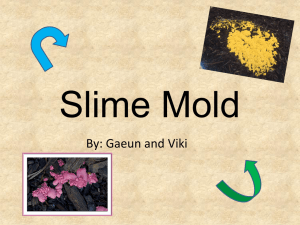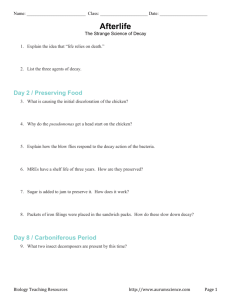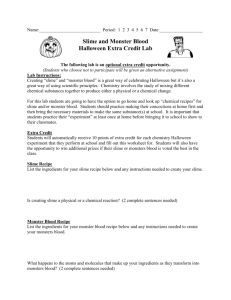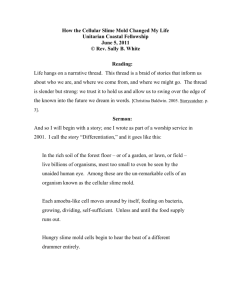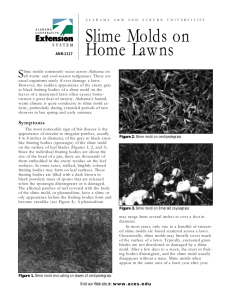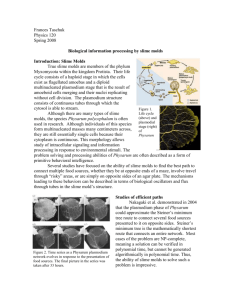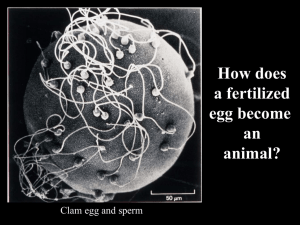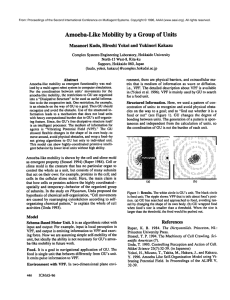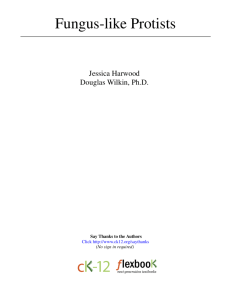Week 8 Glossary
advertisement
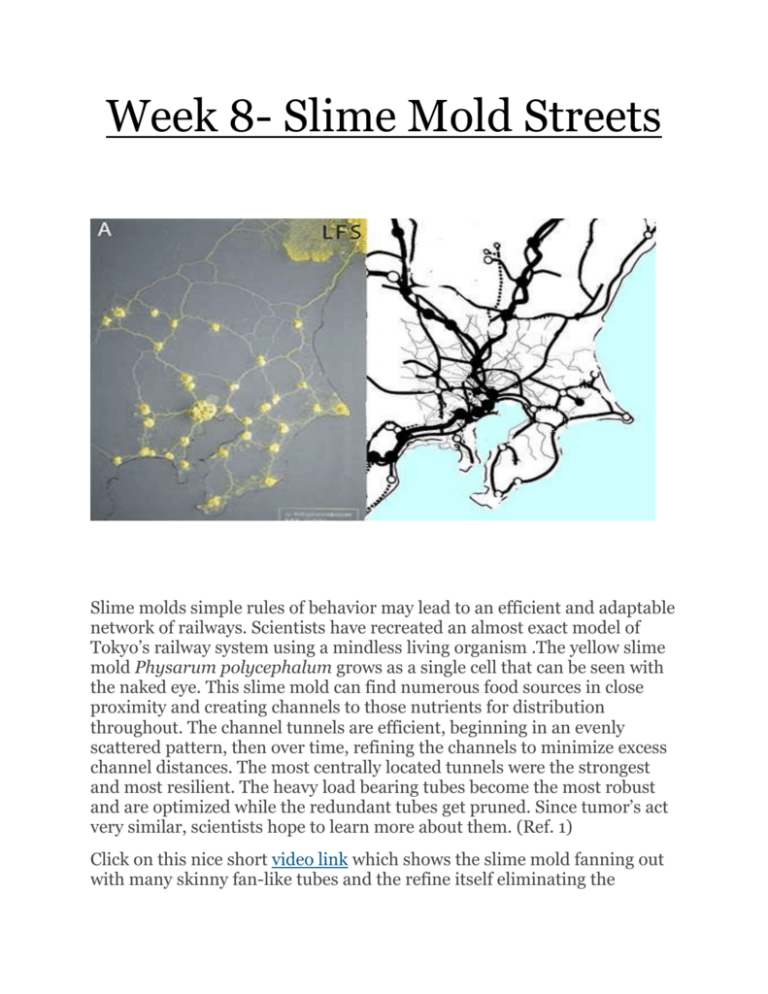
Week 8- Slime Mold Streets Slime molds simple rules of behavior may lead to an efficient and adaptable network of railways. Scientists have recreated an almost exact model of Tokyo’s railway system using a mindless living organism .The yellow slime mold Physarum polycephalum grows as a single cell that can be seen with the naked eye. This slime mold can find numerous food sources in close proximity and creating channels to those nutrients for distribution throughout. The channel tunnels are efficient, beginning in an evenly scattered pattern, then over time, refining the channels to minimize excess channel distances. The most centrally located tunnels were the strongest and most resilient. The heavy load bearing tubes become the most robust and are optimized while the redundant tubes get pruned. Since tumor’s act very similar, scientists hope to learn more about them. (Ref. 1) Click on this nice short video link which shows the slime mold fanning out with many skinny fan-like tubes and the refine itself eliminating the unnecessary tubes and reinforcing the best, most efficient pathway to the food sources. It sends out “scout tubes” called tendrils in all directions to look for the food. (Ref. 2) This is very similar to harvest ants. The more chemical contacts the ant gets form the antennae of other ants, the greater number of foragers are needed to go out and get the food, likewise, the more nutrients or food contacts the slime mold recieves causes more flow and thicker tunnels to that area. The whole will benefit because of what the localized parts have accomplished. And just like swarming colonies, these slime molds are self-organizing, coming up with a very simple method that works. University of Japan researchers have been developing new biologically inspired mathematical models, with highly efficient algorithms for applications in computer sciences. (Ref. 3) Toshiyuki Nakagaki states that slime molds have a high ability of information processing that can be used in other networks like mobile communications. (Ref. 4) Another interesting application used by the slime molds is in the field of health and medicine. Scientist believe that there are astunding similarities between the slime molds pathways for food and the blood flowing pathways to feed tumors. Scientists believe they can help find a way to prevent or kill them. Biophysicists in Singapore and Germany believe that they can make a mathematical model that can help doctors develop techniques to starve the tumors of their blood supply. (Ref. 5) I don’t believe that the railway system is true biomimicry especially since the Tokyo railway system was built before the slime mold discovery. I also think that land terrains around the world are quite different and engineers “connecting the dots” can still do a great job. With that said, there are applications that can be bioinspired using these organisms. Since the largest tubes are formed where the most nutrients are found and flow, scientists can develop a system to maximize transportation flow. An experiment may possibly be done to find a efficient scheduling system for trains. If more passengers are gathering at a paticular rail station, they would get a bigger piece of oats. Then traffic controllers can create a mathmatic model to schedule trains better in areas where the thickness of the slime mold tubes are larger and less trains for areas where the tubes are thinner. This idea can also help with internet bandwidth speed. Using auxiliary pathways when the main one is clogging up would be a useful tool since internet traffic is dynamic and always adjusting, like the mold tubes which can also adjust and move to an area with a greater flow of nutrients. Here is a longer good video link, where the slime mold solves a maze and more. ****Go to the 1 hour and 3 minute 30 second mark of the video***** Citations: Reference 1- http://www.wired.com/wiredscience/2010/01/slime-moldgrows-network-just-like-tokyo-rail-system/ Reference 2- http://www.treehugger.com/cars/mold-may-help-designfuture-transportation-routes.html Reference 3 http://www.sciencedaily.com/releases/2010/01/100121141051.htm Reference 4http://www.nytimes.com/2010/01/26/science/26obmold.html Reference 5 - http://www.wired.com/wiredscience/2012/08/slime-moldscancer-growth/

